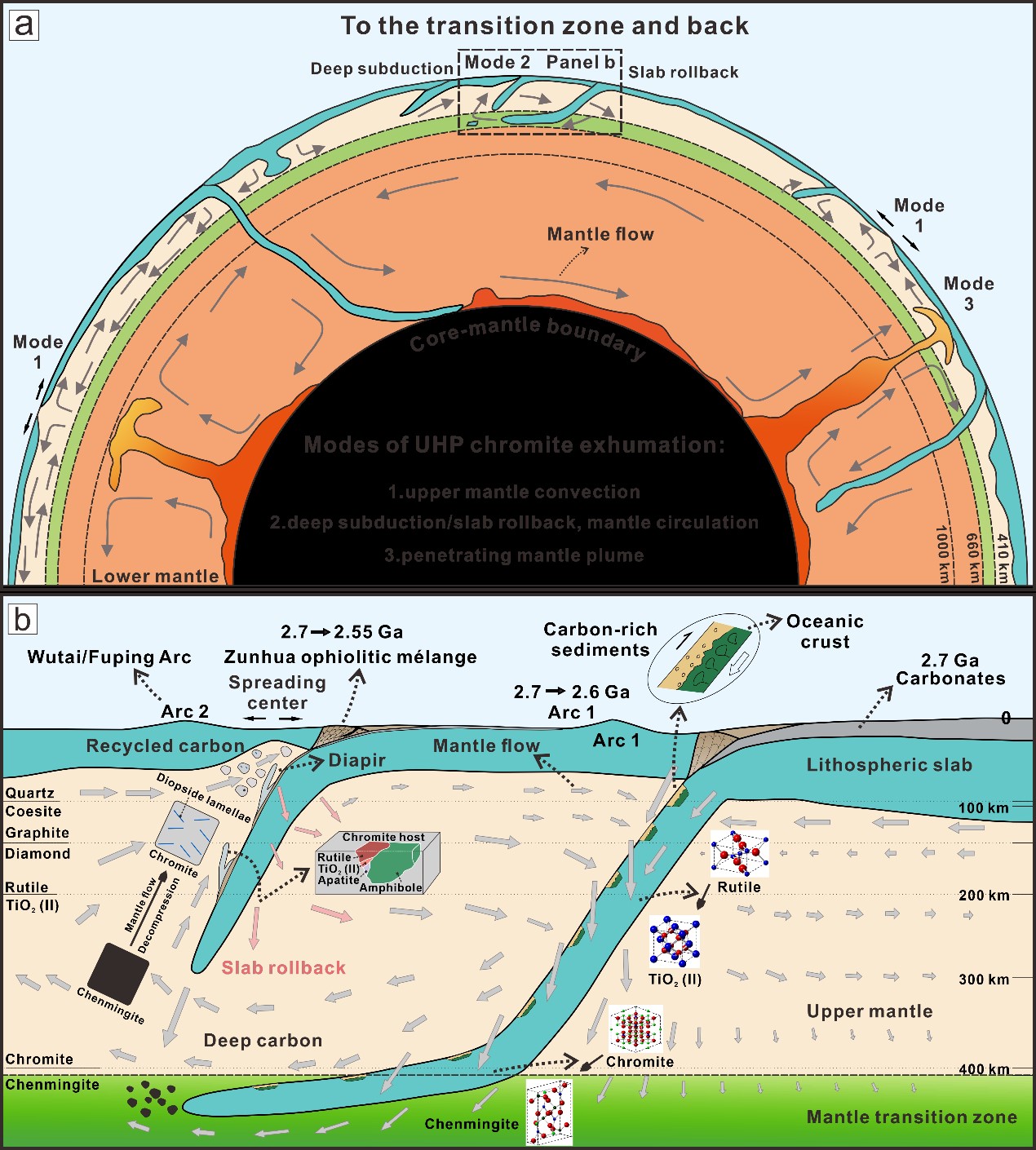To the transition zone and back: Records from diopside exsolution lamellae in chromite from Archean ophiolitic podiform chromitites
Wei Hua, Lu Wanga*, Timothy Kuskya b, Tao Chena c
aState Key Laboratory of Geological Processes and Mineral Resources, Center for Global Tectonics, School of Earth Sciences, China University of Geosciences, Wuhan 430074, China
bBadong National Observatory and Research Station for Geohazards, China University of Geosciences, Wuhan 430074, China
cInstitute of Gemology, China University of Geosciences, Wuhan 430074, China
Plate tectonics and deep subduction provide the conveyor belt for elemental cycling between Earth's surface and deep interior. Here, we report Archean diopside exsolution lamellae in chromite grains from 2.5 billion years old (Ga) subducted then exhumed Archean oceanic crustal fragments in ophiolitic mélange. Diopside exsolution lamellae are a key indicator of a precursor ultra-high pressure (UHP) phase of chromite, known previously only from Phanerozoic subduction zones, indicating deep subduction and elemental cycling between the surface and deep Earth. These lamellae, along with trapped dolomite, and UHP TiO2(II)-bearing multi-phase solid crustal mineral inclusions in the host chromite, suggest that a precursor chromite polymorph (chenmingite) with a crystal structure stable only at conditions in the mantle transition zone (> 413 to 660 km) preserve the history of subduction, entrapment of UHP crustal mineral inclusions, and return flow to the surface in an Archean subduction/forearc system. These nano-scale diopside lamellae and UHP TiO2(II)-bearing multi-phase solid inclusions are strong evidence for deep and steep subduction in the Neoarchean, and early operation of the deep crustal material recycling, linking surface and deep environments, forging a habitable world.
Original source: Wei Hu; Lu Wang*; Timothy Kusky; Tao Chen. To the transition zone and back: Records from diopside exsolution lamellae in chromite from Archean ophiolitic podiform chromitites, Earth and Planetary Science Letters, DOI: 10.1016/j.epsl.2023.118475

Figure 9. Models showing the genesis and preservation of the Archean Zunhua podiform chromitites, their UHP minerals, and the formation of diopside exsolution lamellae. (a) Modes of UHP chromite exhumation include upper mantle convection, slab rollback and deep subduction, and the deep mantle plume mode. Shapes of the mantle plumes were modified after Xiang et al. (2021). (b) The deep subduction/crustal material recycling model shows the genesis and preservation of the Archean Zunhua podiform chromitites, their UHP minerals, and the formation of diopside exsolution lamellae. The model of accretion of multiple arcs, with 2.75-2.53 Ga, and 2.56-2.51 Ga carbonate-bearing sequences on the subducting slabs, is based on Peng et al. (2022).